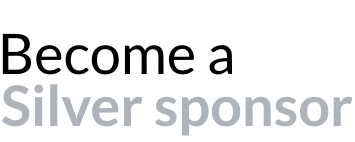E-Invoicing in New Zealand
Last update: 2025, May 27
Summary
B2G
Accepted
Accepted by all central government agencies using the Peppol network in Peppol PINT A-NZ format.
More agencies are set to accept e-invoicing by 2026.
B2B
Not mandatory
There is currently no mandate or incentive planned to push B2B e-invoicing in New-Zealand, but it is allowed on a voluntary basis.
What the Law Says
B2G E-Invoicing
Although there is no official B2G e-invoicing mandate, the Ministry of Business Innovation and Employment (MBIE) has been promoting the Peppol network for several years already in order to encourage public entities to move to electronic invoicing.
All central government agencies in New Zealand accept e-invoices in PINT (Peppol INTernational) A-NZ format.
The government is also reenforcing its stance on e-invoicing by requiring more government agencies to move to e-invoicing by January 1, 2026, in order to ramp-up adoption.
However, as there is no official mandate, B2G transactions are also allowed in other formats:
- Paper-based invoices
- PDF invoices with e-signature or complete audit trail
- EDI
B2B E-Invoicing
The MBIE is actively promoting e-invoicing and maintains a comprehensive list of e-invoicing-ready businesses (20,000+).
But there is no B2B e-invoicing mandate in place in New Zealand, nor is there a plan to implement one. Consequently, B2B invoicing is allowed in all the usual formats:
- Paper-based invoices
- PDF invoices with e-signature or complete audit trail
- EDI
Invoices must be archived for 7 years.
Timeline
B2G E-Invoicing - Partial Mandatory Acceptance
Peppol PINT A-NZ Becomes the New Standard
The former Peppol BIS 3.0 becomes deprecated.
Latest E-Invoicing News in New Zealand
Peppol PINT invoice format becomes the default for B2G in A-NZ
Australian Government budgets $23.3 million to boost e-invoicing
Technical Details
Peppol Network
The Ministry of Business, Innovation and Employment (MBIE) aims to maximize the potential of Peppol, and many public administrations can already be reached using this network. Comprehensive lists of e-invoicing-enabled agencies in New Zealand are available on the MBIE website, as well as official statistics of adoption.
The Peppol network revolves around a four-corner model where 2 companies who want to exchange documents (e.g. invoices) have to connect to the Peppol network each using an Access Point, usually their e-invoicing service provider.
Service providers who want to offer e-invoicing via Peppol to their customers in New Zealand must pass an accreditation in order to ensure the validity & security of the solution they offer. There is a list of certified Peppol Access Points in New Zealand maintained by the MBIE.
Peppol Company Identifier as Electronic Address
Once a company has selected its Access Point provider, they use their New Zealand Business Number (NZBN) to identify themselves as a receiver or to find their business partners. Using the NZBN ensures to correctly address a company and to make sure the invoices are sent to the proper recipient.
Peppol Invoice Format
The e-invoice must be formatted using the PINT (Peppol INTernational) A-NZ format.
Peppol BIS 3.0 format was allowed until May 15, 2025, but has since been phased out in accordance with the New Zealand Peppol Authority Special Requirements.
Other Methods
Peppol is the recommended e-invoicing method in New Zealand, but is not the only solution allowed.
As long as there is a mutual agreement between the sender and the receiver, companies are free to opt for any invoicing solution they prefer, as there is no official e-invoicing mandate in New Zealand.
Consequently, invoices sent on paper, PDF (with an e-signature or a business audit trail) or using EDI are also possible options.
The Invoicing Hub Word
New Zealand
New Zealand has been working very closely with Australia and other countries in the APAC region such as Singapore in order to promote e-invoicing. The path that the government of New Zealand follows is on one hand to mandate central government agencies to accept e-invoices, while on the other hand leaving the choice to private businesses to opt in or not.
Consequently, mass adoption is still a long ways off, even if the government is offering financial incentives (better payment delays) for business opting to send e-invoices to public administrations.
But there are currently no further regulatory plans to make e-invoicing mandatory in New Zealand, despite of all the well-known benefits it would bring (automation, visibility, cost savings, …).
Still, MBIE’s choice of standardizing on Peppol makes it simple for any willing business to implement e-invoicing.
Additional Resources
Public entity supervising e-invoicing in New-Zealand
E-invoicing guidelines & resources published by the MBIE
Peppol International (PINT) specifications for Australia & New Zealand
List of Peppol Access Points certified to operate in New Zealand
Get your Project Implemented
Gold Sponsor
Silver Sponsors
Latest News
Latest provisions and technical challenges for the imminent Belgium mandate
Keeping Up with the Mandates: A Practical Guide to E-Invoicing Compliance
E-invoicing in Croatia from January 1, 2026: The Complete Guide
Veri*Factu faces another delay, now pushed to 2027
Webinar – The Global Shift to e-Invoicing
The Invoicing Hub
experts can help you
Strategy, Guidance, Training, …







